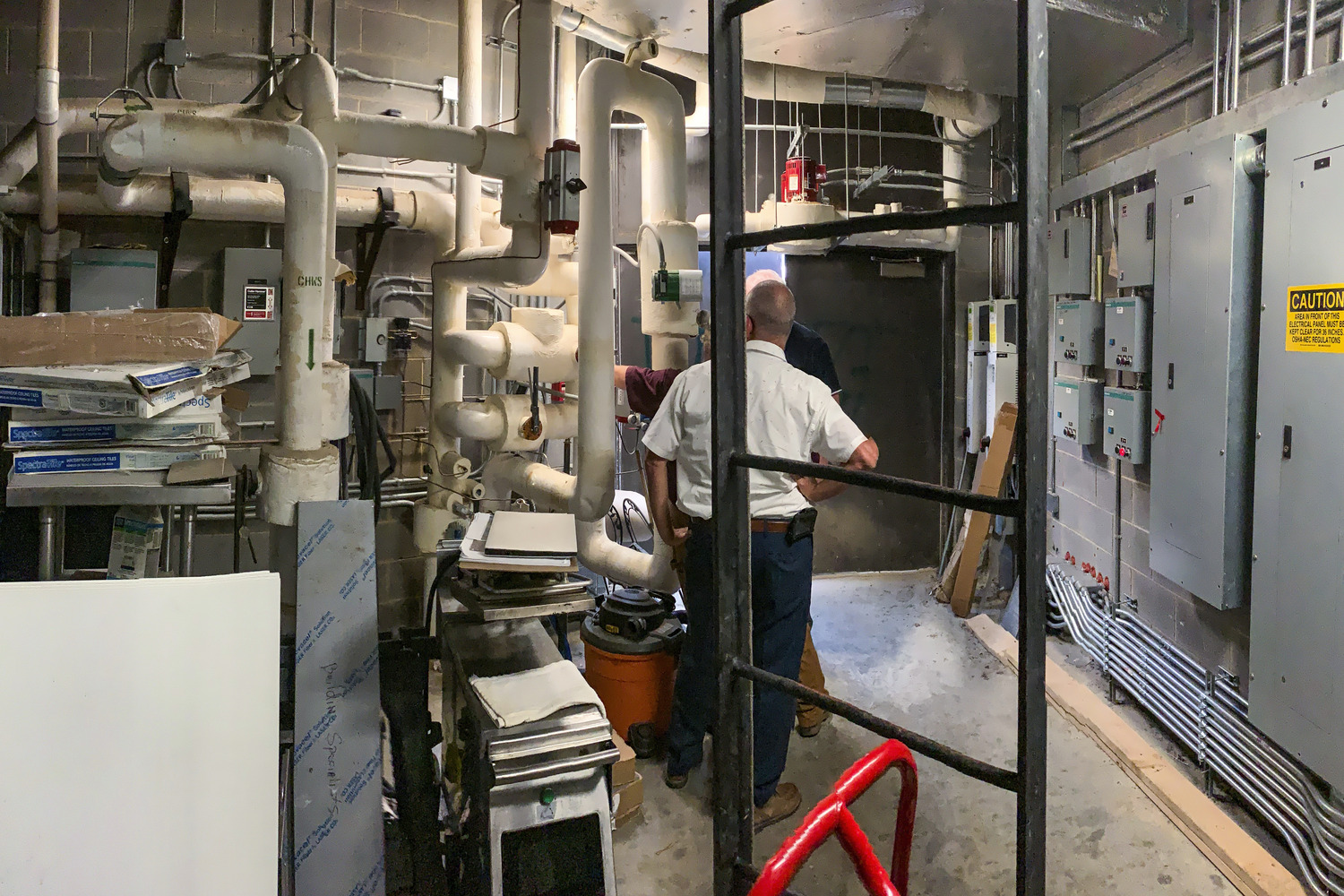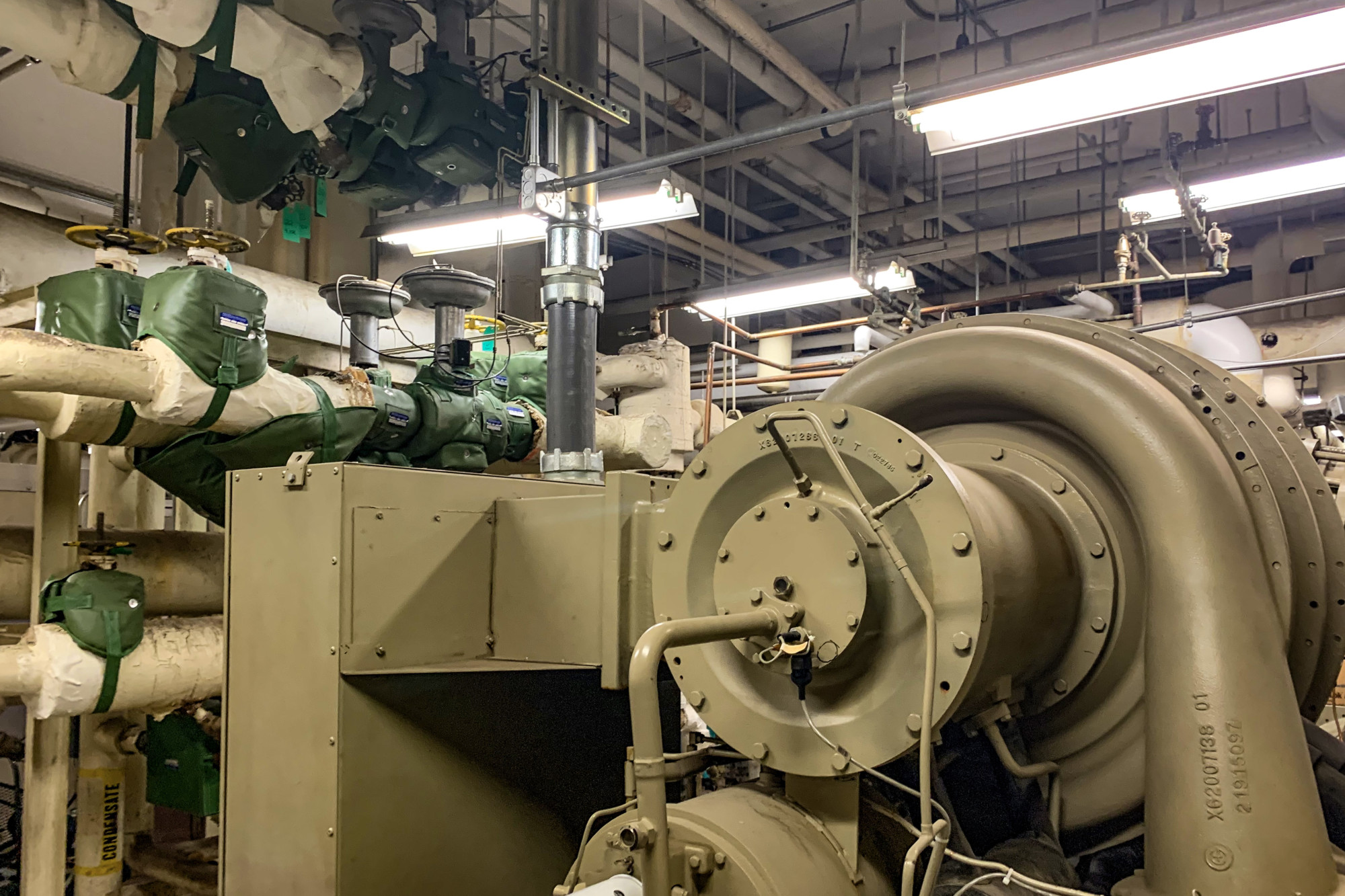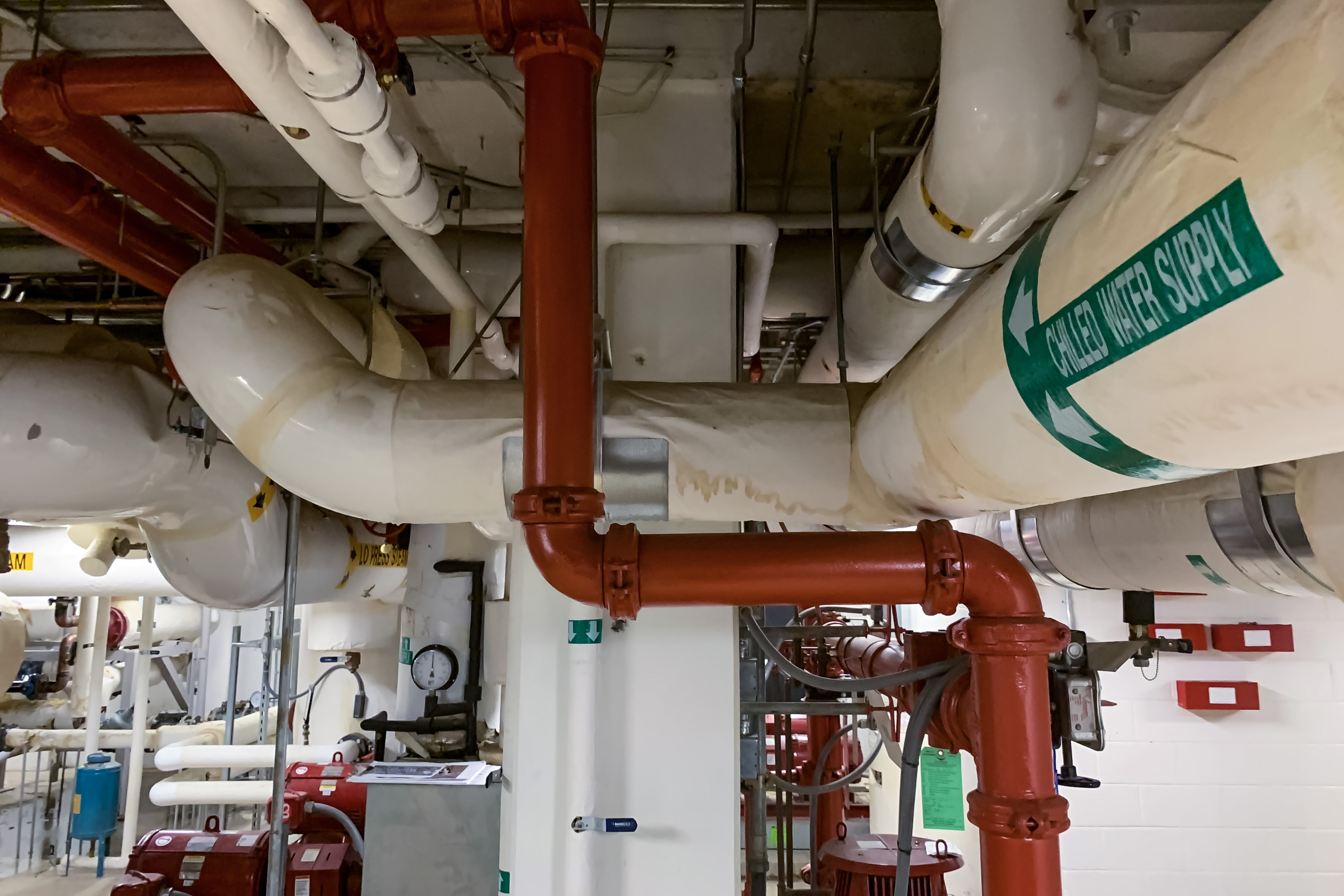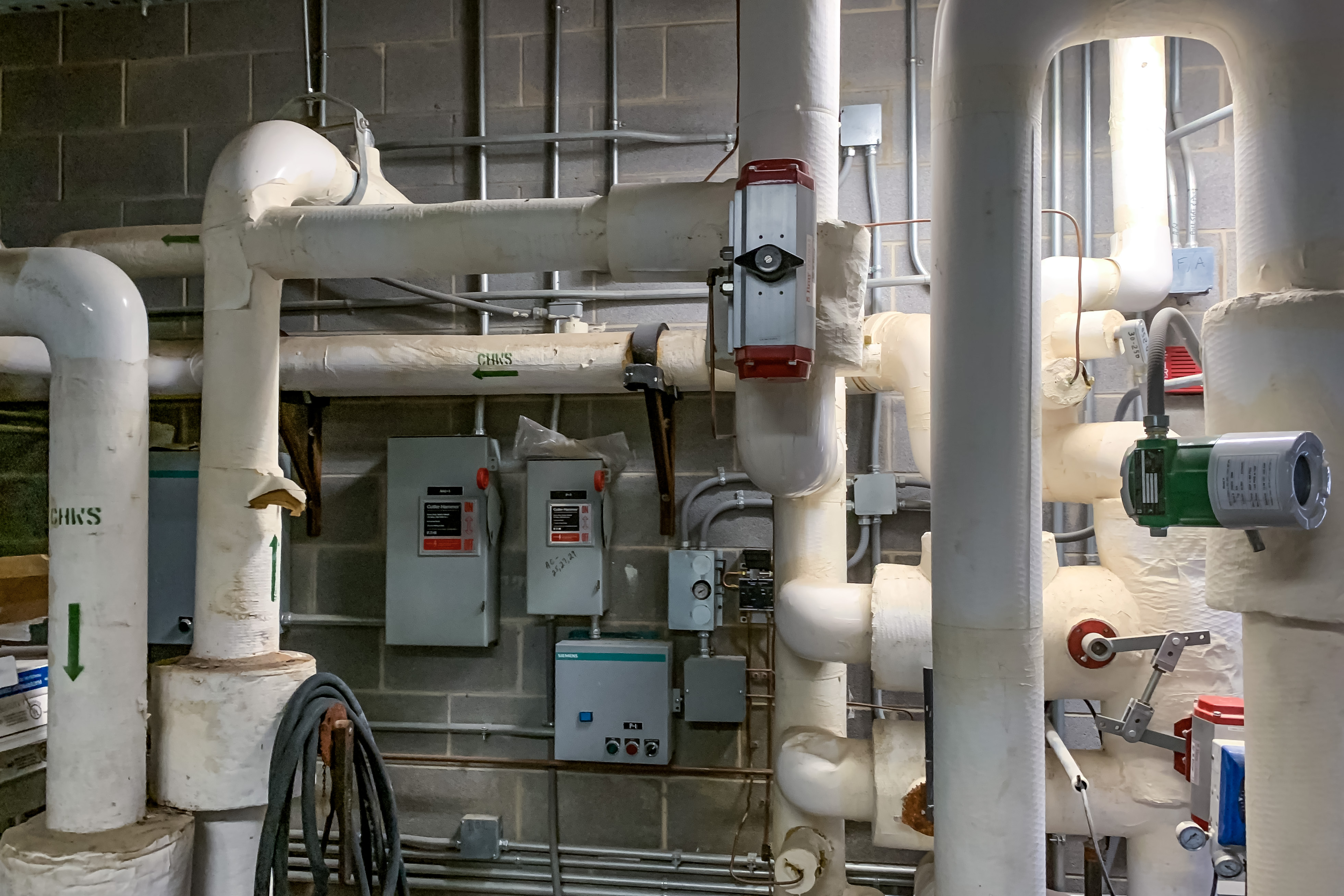Serving slightly more than 30,000 undergraduate students, Virginia Polytechnic Institute (Virginia Tech) is a prosperous educational and economic center for its’ state. When the university was experiencing an operational problem with its central utility plant, which heats and cools one dining hall and five residence halls, it called on Gresham Smith to analyze and correct the issue. Our engineers’ smart solution ultimately reduces energy consumption, improves air quality, and gives students and staff more control over the temperature in their space.
student centered buildings
ton capacity
year life span
Working Backwards to Find the Solution
Our engineers began by analyzing the entire system to understand how the individual buildings were functioning and how they were affecting the capacity of the central utility plant. The existing central utility plant used a constant volume pumping system. Our engineers found that the secondary system was experiencing uncontrolled demands that exceeded what the primary system could handle, because of modifications made to the system over several years. As a result, the system was not able to leverage its full capacity, leaving students and staff without adequate heating and air conditioning.After identifying the issue, the team worked with Virginia Tech and their subcontractors to make adjustments to the pumping system that would ultimately convert the constant volume secondary system, to a variable flow arrangement. The team proposed a phased approach that would incorporate less invasive changes to improve the overall system distribution quickly, they proposed other changes that would fully convert the system to variable flow and improve operations, maintenance and minimize energy consumption. These modifications would allow the system to modulate and meet dynamic conditions while improving occupant comfort.
It’s All About the Students
Since the Owens Hall central energy plant served student centers and dormitories, the system saw changing loads throughout the day. During the day and early evening, the student centers needed more capacity to satisfy higher loads for food preparation and students convening in dining halls. In the late evening and early morning hours, students would move back to their dorms. It was important the system be able to adjust as the students moved between buildings to maintain comfort conditions. The adjustment applied to the existing system, unlocked existing capacity which ultimately led to better temperature control and overall improved student satisfaction.Availability, Availability, Availability
For this project, our engineers had to work around the availability of the buildings while not intruding upon students and faculty. Since the buildings were all student-centered and needed to be operational during the academic year, work on the system needed to be completed quickly and could only be done during specific times.Going Green, But with Old Equipment
By deploying a solution to utilize a variable flow control system, Gresham Smith found a way to directly reduce the energy consumption of the central utility plant and make it run as efficiently as possible—without the capital expense of adding new equipment.Project Contact
Our team is committed to improving the places we call home.










